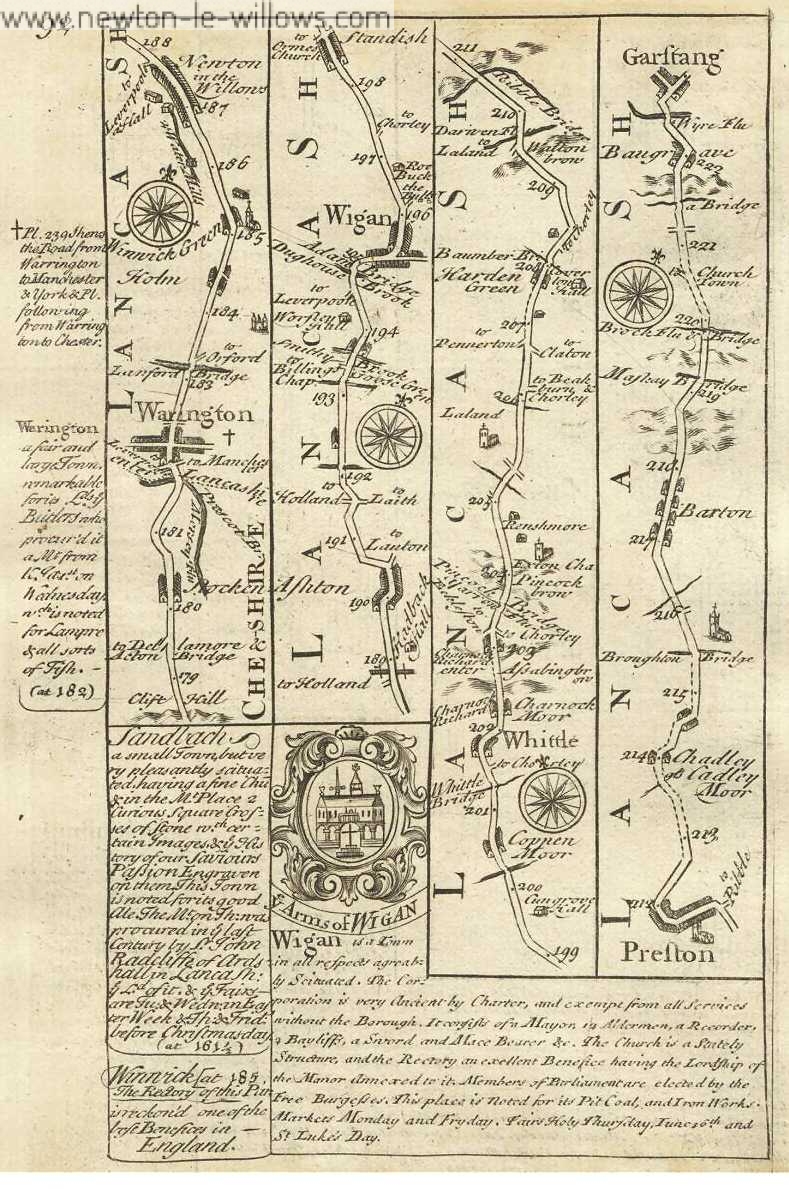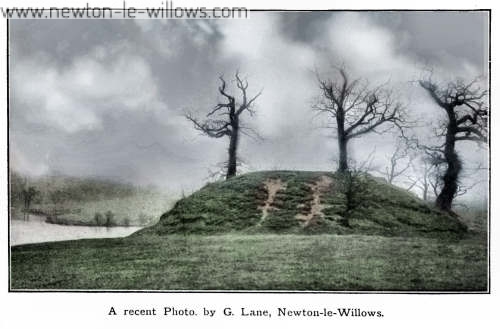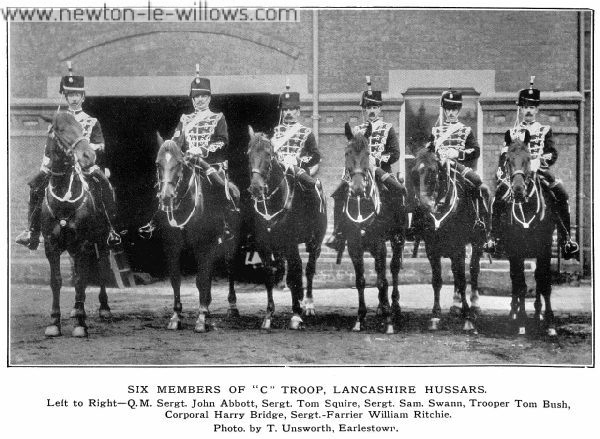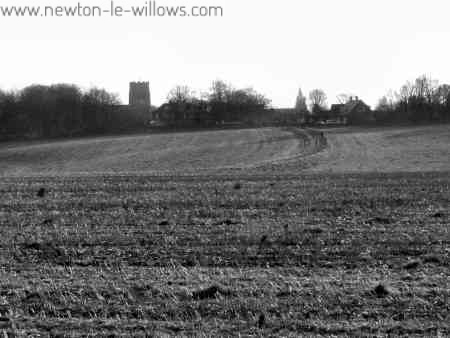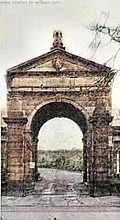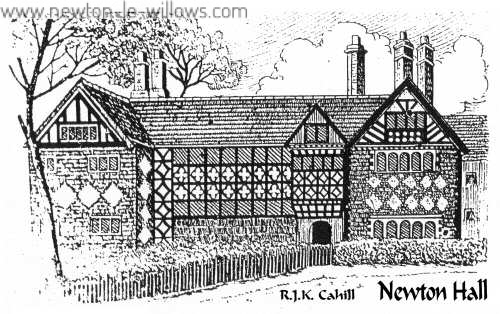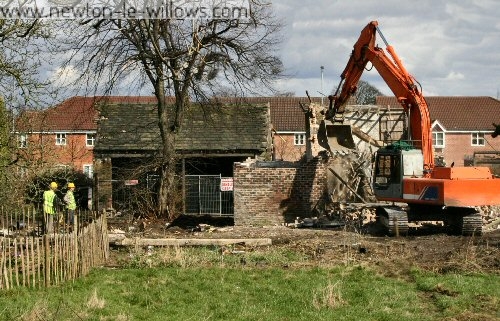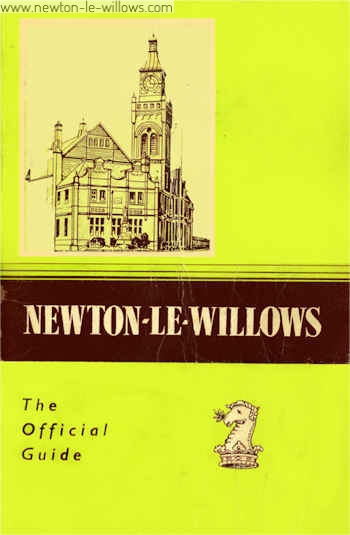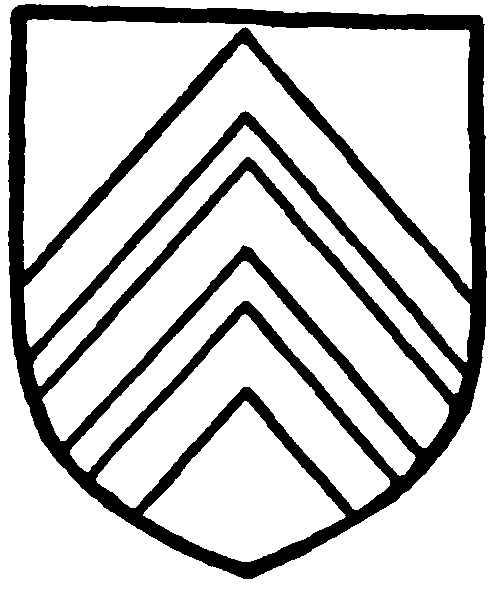I was sent the whole page, but its a very large scan, so i have cut out just the main section of it for you here.
Read More >>Category: Newton-le-Willows
Rokeden – Poem by J H Lane
There is not in dear Newton a picture so pretty As the green rocky dean at the north of the town; Oh, the sight of this valley inspires a sweet ditty, Of sprightliest measure, its beauties to crown. From the old Castle Hill to the Lady Hill stretching, What a sylvan display greets the visitors eye! A succession of scenes worth an artistic sketching In bright colours to equal the bow in the sky. First the bridge oer the lake claims the life-limning brushes, With its background of trees on…
Read More >>The Newton in Makerfield Volunteers
In 1803, when there commenced a period of twelve years of imminent danger of invasion, and a force of volunteers, stated to amount to 463,134 men, was raised for local service. At this time a corps was formed in Newton with Thomas Claughton, Esq., of Haydock Lodge, as colonel, from the Orderly Book of which corps (now in the Warrington museum) we give a few extracts:- Newton, Octr. 2nd, 1803 R.O. Mercury, 10 die Augusti, 1803 Resolved, nemine contradicente Ordered… That a copy of the resolution of the House of…
Read More >>Castle Hill (Road)
This road is clearly visable going straight across the fields towards the mound, at some points the trackway (road) is over 2 meters higher than the surrounding fields. This next image will take a while to download as its 150kb, sorry its a little larger than normal, but its a full 360 degree view of the area. You can see clearly in this view that the Castle Hill Rd, snakes across the fields from Newton high st directly to the mound, The M6 moterway being the first thing to break…
Read More >>Randalls Nurseries / The Arch, Newton High St
Colonel Thomas Peter Legh was the person who originally Built the Archway we now see in Newton High Street, It was built as a gateway to Haydock Park/Lodge, Peter Legh was still a serving Officer at the time the Arch was being built, and while away at camp he apparently left orders with the workmen that he should be the first person to pass through the arched gates after their completion. His orders were of-course obeyed, but unhappily for Col. Peter Legh, he was borne through them first when Dead,…
Read More >>The History of Newton Hall
The History of Newton Hall , Newton-le-Willows Introduction During the course of the research many details were found relating to Newton Hall in Newton-le-Willows (formerly Newton in Makerfield). These include not only the names of a number of the owners and occupiers but also a description of the interior of the property and some of the earlier history of the site. It would appear that Newton Hall stands on the site of or at least very close to the site of another property, long gone. Built in 1634, the later…
Read More >>Nobel Prize for local born man
He served as professor of immunology at St. Marys Hospital Medical School, London, until 1967, when he joined the faculty at the University of Oxford. Porter approached the problem of antibody structure by using an enzyme, papain, to cleave the bloods immunoglobulin molecule into functionally different fragments, which were then amenable to structural analysis. Edelman, working independently, used different methods to break up the molecule, and concluded that rather than a single chain of amino acids, it was a multichain entity. Porter and his research team were then able to…
Read More >>Roman Road – Archaeologists Evaluation Dig
The Demolition The odd thing is, this was all happening right besides my house, I was overlooking the whole archaeological evaluation. It was like having my own personal Time Team, right next door. The house beyond this evaluation trench is my own humble residence. I may have to revise this text later if my understanding of the evaluations prooves wrong, but as I understand it, the archeaologists were looking for remains of the Roman Road and also a Tannery, from published information and local maps from different periods its well…
Read More >>Newton Guide from c1967
Situation and Communications THE URBAN DISTRICT of Newton-le-Willows is in South West Lancashire. It is an industrial town but is within easy reach of open countryside and has many open spaces within its boundaries and good class residential areas. The population is approximately 22,000 and the district comprises some 3,103 acres. Communications are very good. The Earlestown station in the centre of the commercial sector of the town is on the main Liverpool-Manchester railway and is an important junction. The Trans-Pennine diesel services stop at this station on their regular…
Read More >>Local Church build dates
Found these dates for the building of local churches, thought the info could add to the local data available on the website. 1864 St. Mary & Johns (RC) 1866 the Wesleyan Chapel 1872 the Primitive Methodist Chapel 1878 St. Johns and the Congregational Church 1881 the Baptist Church
Read More >>History of Newton in Makerfield
From the 1911 book Victoria History of the County of Lancaster Vol 4.This township is usually called Newton in Makerfield or Newton le Willows, to distinguish it from other places of the name. It has an area of 3,103 acres, (fn. 2) and the population in 1901 numbered 16,699. Sankey Brook and its tributary Newton Brook form the greater part of the southern boundary; the latter is joined by the Millingford Brook, which crosses the township from north to south. NEWTON IN MAKERFIELD Neweton, Dom. Bk. Makeresfeld, 1205, 1351; Makefeld,…
Read More >>